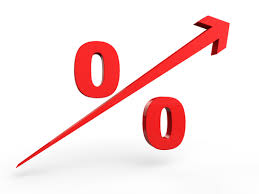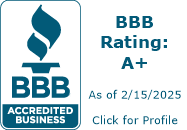
The federal government is about to back mortgages of nearly $1 million for the first time. The maximum size of home-mortgage loans eligible for backing by Fannie Mae and Freddie Mac is expected to jump sharply in 2022, a reflection of the rapid appreciation in home prices nationally over the past year. How will this impact the real estate market? Who pays for these changes? Hint: you will!
How do Mortgages work?
Before going into the change from Fannie Mae, it is important to understand how the mortgage market works. The United States mortgage market is unique. For the vast majority of mortgages, Banks, brokers, or other lenders originate loans and immediately sell the note to either Fainnie Mae or Freddie Mac. The two government sponsored entities (GSEs) buy mortgages, package them via securities, and sell these securities to various investors. At the same time Fannie/Freddie and ultimately taxpayers guarantee these mortgage pools which enables very low pricing as the government holds the majority of risk in the security. This system has enabled the US to have rock bottom rates and offer a 30 year mortgage product.
What are in the new changes for Fannie/Freddie?
Currently, the government-controlled mortgage companies can back single-family mortgages that have balances as high as $548,250 in most parts of the country and up to $822,375 in expensive housing markets, including parts of California and New York.
Those limits are expected to jump to a baseline level of about $650,000 in most jurisdictions and to just under $1 million in high-cost markets. This is up from 2015 limits of 350,000 and 600,000 for jumbo mortgages.
The precise loan limits are set to be announced Nov. 30 by the agency, which oversees the two mortgage giants, and the new limits will go into effect in January. Mortgages within the limits are called conforming loans; mortgages that exceed them are called jumbo mortgages, which tend to be more expensive for borrowers to obtain and generally have larger down payments for comparable borrowers.
The Difference between Jumbo loans and conforming loans
Jumbo loans are considerably riskier due to their size. For example, the possible loss on a 1m dollar property is considerably higher than a 100k loan. Furthermore, when there is a default, the marketing time on a million dollar house is considerably greater as the available pool of buyers is lower. As a result, banks have implemented four strategies to mitigate this risk
- Higher rates: Currently rates on jumbo loans are ½ to ¾% higher than a 30 year mortgage, I suspect the same will happen on many of the condos that Fannie/Freddie will no longer insure.
- Stricter underwriting standards: With no government backing, banks/lenders will increase underwriting to decrease their risk. This will include higher credit score requirements, increased income, and decreased debt.
- More Adjustable Products (ARM): Lenders are stuck with the future interest rate risk. As a result you see more ARM products like a 5/1 or 7/1 where a mortgage is fixed for 5 years and then adjusts. This is how the jumbo market currently functions with 30 year fixed mortgages not as prevalent
- Lower Loan to Value ratios: Instead of the traditional 20% down, many jumbo mortgages require 25-30% down to reduce the lenders exposure
Fannie/Freddie subsidizing expensive houses
The Federal governments is taking a much larger slice of the housing market by having huge jumps in the mortgages they buy. With the increased limits the government will make it considerably easier to buy very expensive homes. The expected jump in loan limits raises questions about the appropriate role of the government in housing and whether taxpayers should effectively backstop sky-high housing prices, when Fannie and Freddie’s market share is already rising.
In essence the increased loan limits are not focused on supporting buyers in Indiana or Georgia but in expensive coastal markets.
Taxpayers on the hook big time
The companies’ market share during the pandemic jumped to nearly 60% of all new mortgages, up from about 42% in 2019, according to the Urban Institute, a Washington think tank that conducts research on economic and social policy. With these changes, the percentage of loans guaranteed by taxpayers will likely increase to 75% or greater.
2008 wasn’t that long ago when there were huge losses in real estate. Unfortunately, the losses in 2008 were not an anomaly, there have been many cycles in the last 50 years with real estate losses. With taxpayers on the hook for losses on an even greater amount of mortgages, the losses will be amplified in the next cycle.
Summary
The original objective of Fannie/Freddie was to make mortgages available to low- and moderate-income borrowers. Remember Fannie/Freddie does not provide loans but backs or guarantees them in the secondary mortgage market. This leads to the question, is a million-dollar house for “low or moderate income”? It seems that there is considerable scope creep from the original intent of Fannie/Freddie.
I think most, including myself, would say a million-dollar home is not for a low-income borrower. Raising loan limits so high is effectively trying to find a solution for a problem that doesn’t exist; there is a robust jumbo market that has effectively factored in risks for higher priced loans. By expanding loan sizes to high priced homes, taxpayers are going to be on the hook for enormous losses when real estate hits another cycle. The downside risks for taxpayers are much greater than any benefit from such a huge expansion in loan limits. We will all pay the price through higher taxes to subsidize expensive houses in expensive cities.
Additional reading/resources
- https://www.wsj.com/articles/fannie-mae-freddie-mac-to-back-home-loans-of-nearly-1-million-as-prices-soar-11637071380?st=k94odj1gsyh8w4j&reflink=share_mobilewebshare
- https://www.investopedia.com/articles/investing/091814/fannie-mae-what-it-does-and-how-it-operates.asp
We are a Private/ Hard Money Lender funding in cash!
If you were forwarded this message, please subscribe to our newsletter
I need your help! Don’t worry, I’m not asking you to wire money to your long-lost cousin that is going to give you a million dollars if you just send them your bank account! I do need your help though; please like and share our articles on linkedin, twitter, facebook, and other social media. I would greatly appreciate it.
Written by Glen Weinberg, COO/ VP Fairview Commercial Lending. Glen has been published as an expert in hard money lending, real estate valuation, financing, and various other real estate topics in Bloomberg, Businessweek ,the Colorado Real Estate Journal, National Association of Realtors Magazine, The Real Deal real estate news, the CO Biz Magazine, The Denver Post, The Scotsman mortgage broker guide, Mortgage Professional America and various other national publications.
Fairview is a hard money lender specializing in private money loans / non-bank real estate loans in Georgia, Colorado, Illinois, and Florida. They are recognized in the industry as the leader in hard money lending with no upfront fees or any other games. Learn more about Hard Money Lending through our free Hard Money Guide. To get started on a loan all we need is our simple one page application (no upfront fees or other games).
